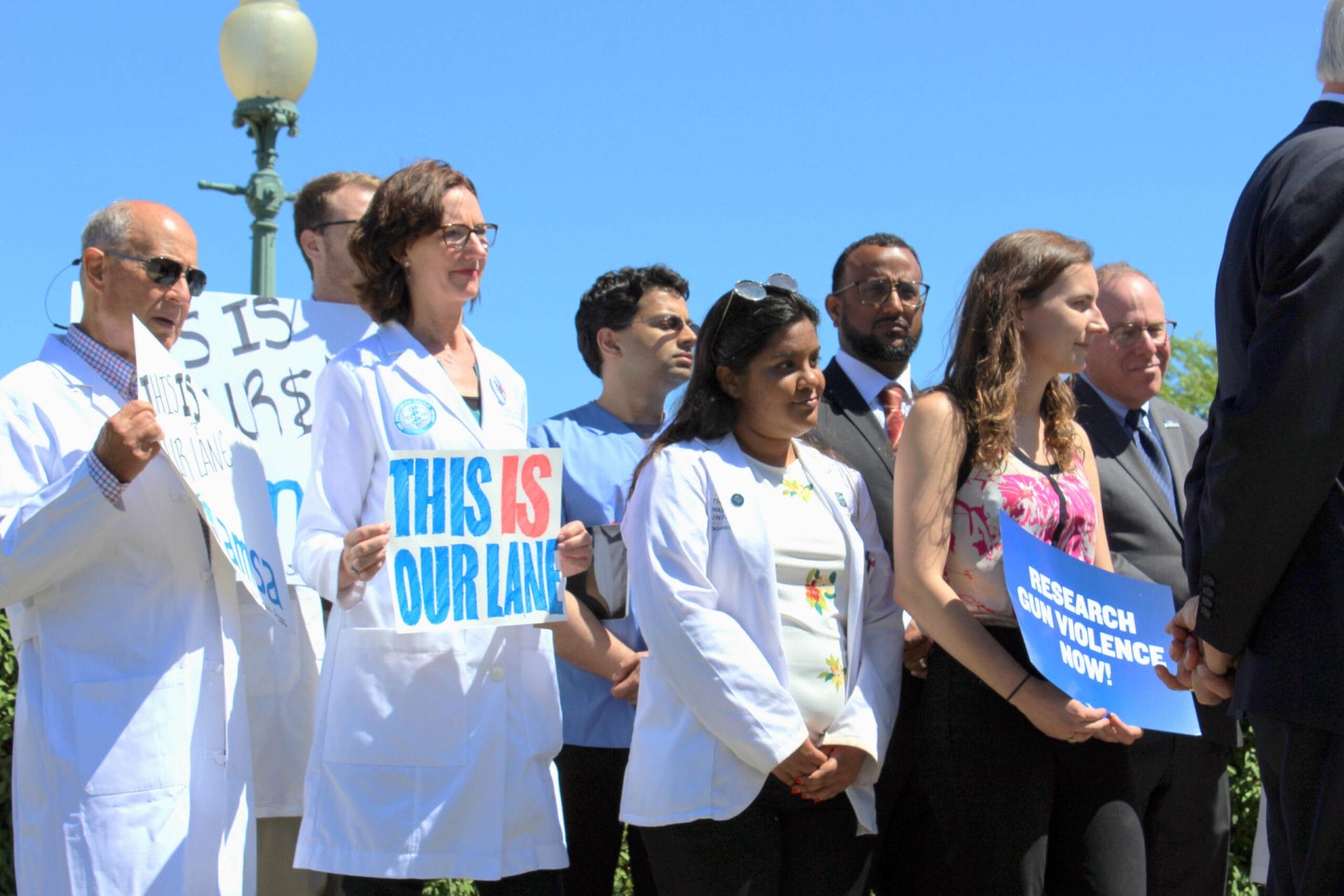
America’s Gun Violence Epidemic Is Transforming Medicine
Firearm violence is a public health issue. To many medical professionals, it’s also a personal one.
The field of medicine is undergoing an evolution in the way it thinks about the firearm epidemic.
For decades, gun violence in America was seen exclusively as a policy issue outside the realm of medicine and public health.
Yet nearly every single physician trained in the US is exposed to gun violence. Treatment of gunshot wounds is emphasized heavily during surgery and emergency medicine rotations. We’ve known for decades that access to a firearm in the home increases the risk for suicide, and now medical students learn about how firearms are the second-leading cause of death in children aged 1–17.
Source
Based on three most recent years of complete data (2013, 2014, and 2016). Agency for Healthcare Research and Quality, Healthcare Cost and Utilization Project, last accessed June 25, 2020, hcupnet.ahrq.gov.
Over the past decade, the medical field shifted towards thinking about gun violence as a public health issue. Spurred by tragedies like those at Sandy Hook Elementary in 2012 and Parkland in 2018, healthcare professionals have used their voices to share what they know about gun violence and reframe the conversation around it.
Grassroots movements sprang up, including #ThisIsOurLane, where doctors, nurses, medical students, and paramedics relate personal stories about their encounters with gun violence, defending the definition of gun violence as a public health crisis. Policymakers responded too, including allocating funding to study gun violence to the CDC and NIH.
This has not come at the expense of thinking about gun violence from other perspectives—a symptom of income inequality, a consequence of ubiquitous gun ownership, a product of an overfunded gun lobby—but it does provide us with additional language and tools to address it.
I made the short film “Since I Last Saw You” as a course project during my third year of medical school. We were asked to reflect on a formative moment in our medical careers thus far and create a project discussing how it changed the way we think about medicine.
I thought back to my pediatric surgery rotation—one of my first rotations in the hospital. Knowing at the time that I was interested in pediatrics, pretty much every moment during that rotation has had a lasting impact on how I think about medicine. Being able to help patients and their families navigate some of the most delicate moments in medicine was immensely challenging and taught me invaluable lessons.
Experiencing the story I tell in “Since I Last Saw You” has left a deeper impression on me than nearly everything I’ve experienced since then. Like medicine itself, this story is complex, personal, and full of grief—yet deeply optimistic. As I’ve continued through medical school, the way I’ve thought about this story has grown with me. Each time I think about it, I learn something new—a lesson I can take with me to my future patients.
I’ve reflected on the number of different healthcare professionals who met with the family the few short days they were there. I’ve thought about how each of them had to go and see other patients afterwards and somehow continue on with their day. I’ve thought about how I’ve learned to take the story personally, and how maybe that’s not a bad thing.
The gun violence epidemic in America will not be solved by doctors. It won’t be solved by policymakers. It won’t be solved by gun owners. Rather, it will take the concerted action of all of us to address each layer of the complex issue that is gun violence.
While medicine, for its part, has made great strides in addressing gun violence, we still have a long way to go. As one study found, when making statements about gun violence and the pediatric population, “most physician professional associations appear to be reacting to current events rather than keeping gun violence against children on the agenda.”
As of 2018, less than 20% of medical schools had dedicated content about gun violence in their curricula. Medical education needs to include more comprehensive training about gun safety, the toll of gun violence, and the importance of using our voices for advocacy in order to decrease the burden for our patients. Doctors need to continue to speak out, even when there isn’t a mass shooting making headlines.
Reflecting again about the story that brought me here, I think about the young gun violence victim’s still-beating heart ticking away the seconds, almost like a stopwatch. It serves as an alarm about the urgency of finding an end to the gun violence epidemic and a stark reminder of how far there still is to go. But in that reminder, there’s also a reminder of the many resilient, perseverant, and hopeful individuals who are giving it their all to find a way out of this crisis and create a better future for our country’s children.
